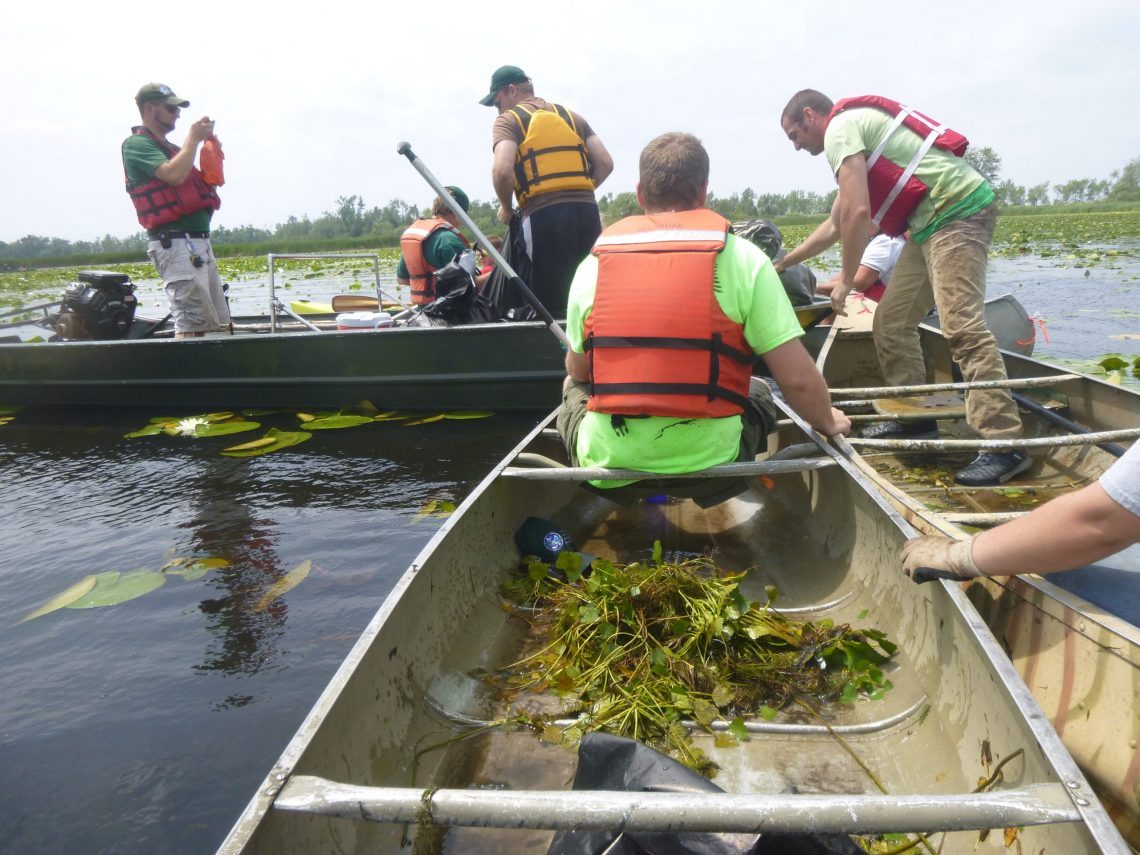Article contributed by SLELO Staff, Brittney Rogers
Depending on the size of an infestation, populations of water chestnut (Trapa natans), are currently being managed across NYS and SLELO through a variety of methods. Some programs are applying herbicide onto dense beds or using mechanical harvesters. Another potential option if approved, is Galerucella birmanica as a biological control, currently being studied at Cornell University, among others. The most common method for managing water chestnut is manually pulling plants. The best time to do this is after fruit has formed in late June but before they are ripe in early August. In 2019, there were 13 organized hand pulls in SLELO, including efforts from the Soil and Water Conservation District in the Oswego River. This was equivalent to the removal of over 35,000 pounds of rosettes. We removed a similar amount in 2018, totaling 69,000 pounds in two years.
Those numbers are astounding! The best part is, in SLELO we are fortunate enough to still have the opportunity to suppress populations and prevent it from spreading to new waterbodies. Knowing this, it is important we improve our data on a regional level regarding how much water chestnut is being removed, how many people are involved the effort, what that effort entails, and how populations are responding to management.
How can our regional efforts contribute to statewide (and international) efforts?
In collaboration with iMapInvasives and AIS coordinators across the state, we are working hard to standardize metrics collected. Standardized metrics will help us scale up our management efforts and go above and beyond the way we are currently doing our work. We hope these metrics will provide sufficient information for managers to make better-informed decisions regarding efforts and potential restoration opportunities.
Afterall, isn’t protecting and restoring native ecosystems our main goal? In SLELO, we have been working with hand-pull organizers to collecting important information regarding hand-pulls on a simple spreadsheet for the last few years which has greatly increased our knowledge of water chestnut beds and removal efforts. We have also received an increasing number of reports of water chestnut populations in the region, nearly 600 as of the end of 2019. The recent iMapInvasives updates have allowed programs to more easily track treatments that are occurring, like those in Lakeview WMA, Salmon River and Grindstone Creek, though not all programs are tracking in this manner.
We are hoping to determine how much water chestnut participants are removing in a standardized measurement for removal (weight, bed size, etc.); how programs are disposing of harvested material; if composting, is there any known reuse; tracking the number of volunteers attending events and the hours involved in the efforts. Stay tuned for new resources coming out this spring for how to plan, correctly remove and report your efforts. If you haven’t already done so, be sure to share your efforts with us or if you’re hosting hand pull events and have additional information you’d like to share please reach out to Brittney.rogers@tnc.org.

